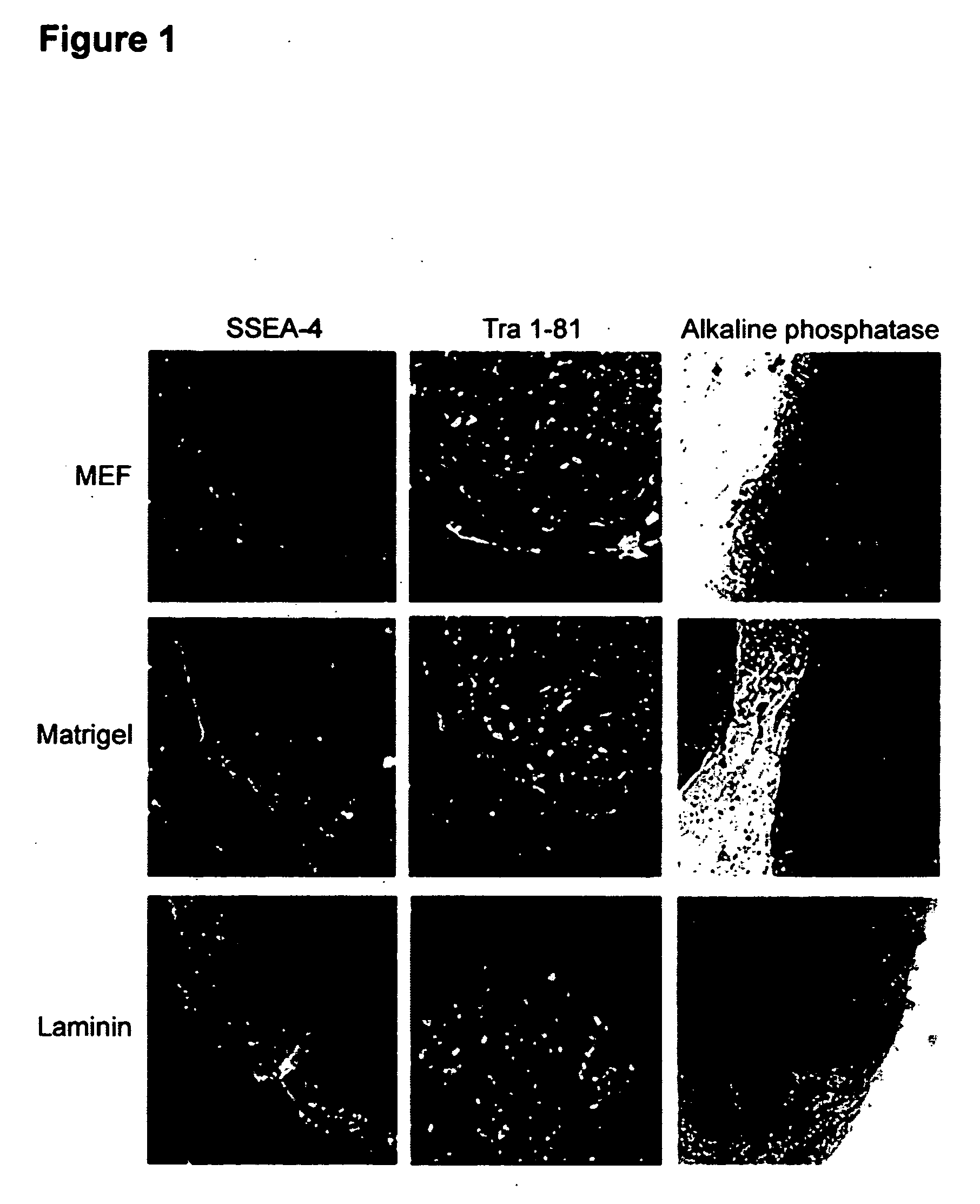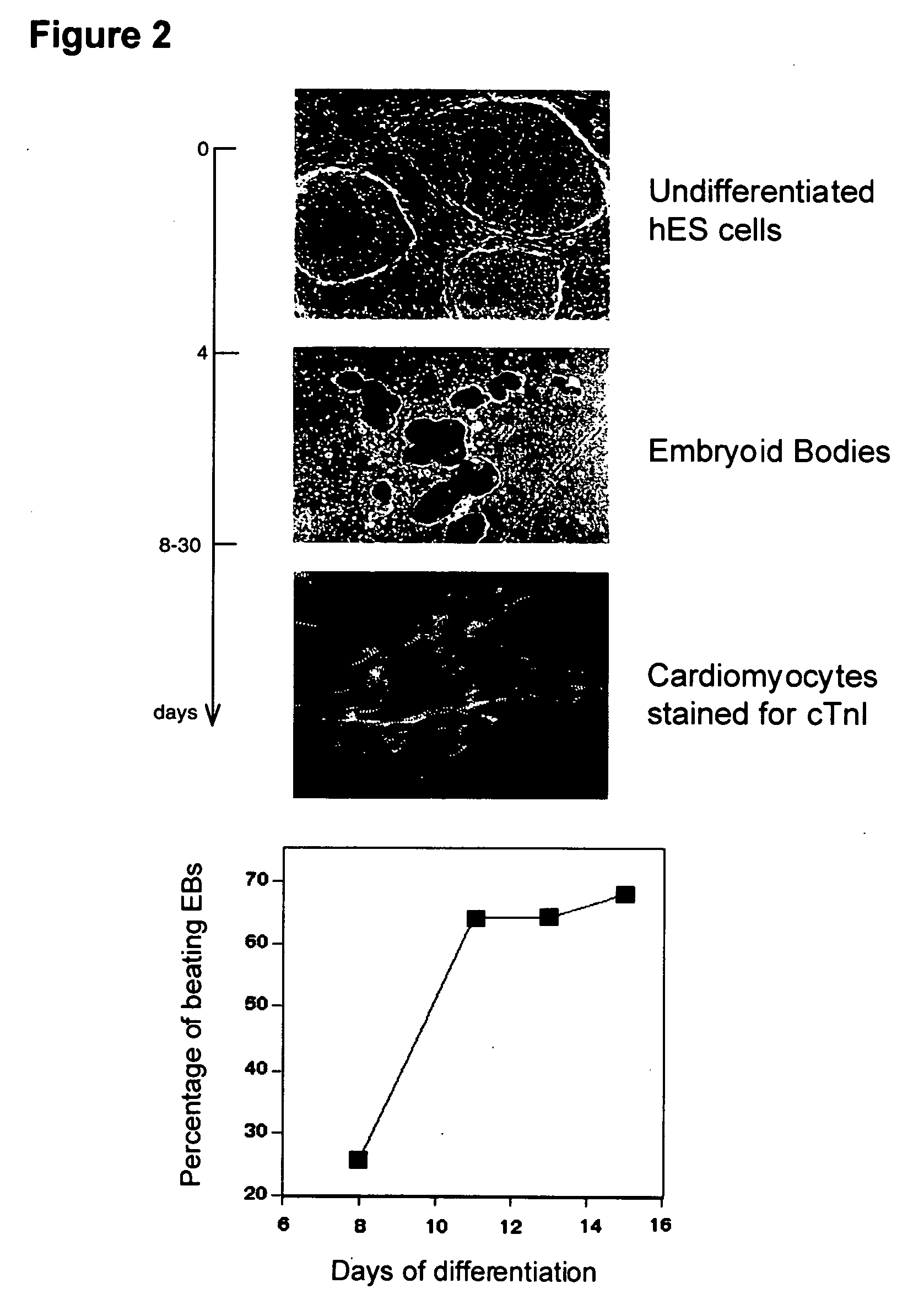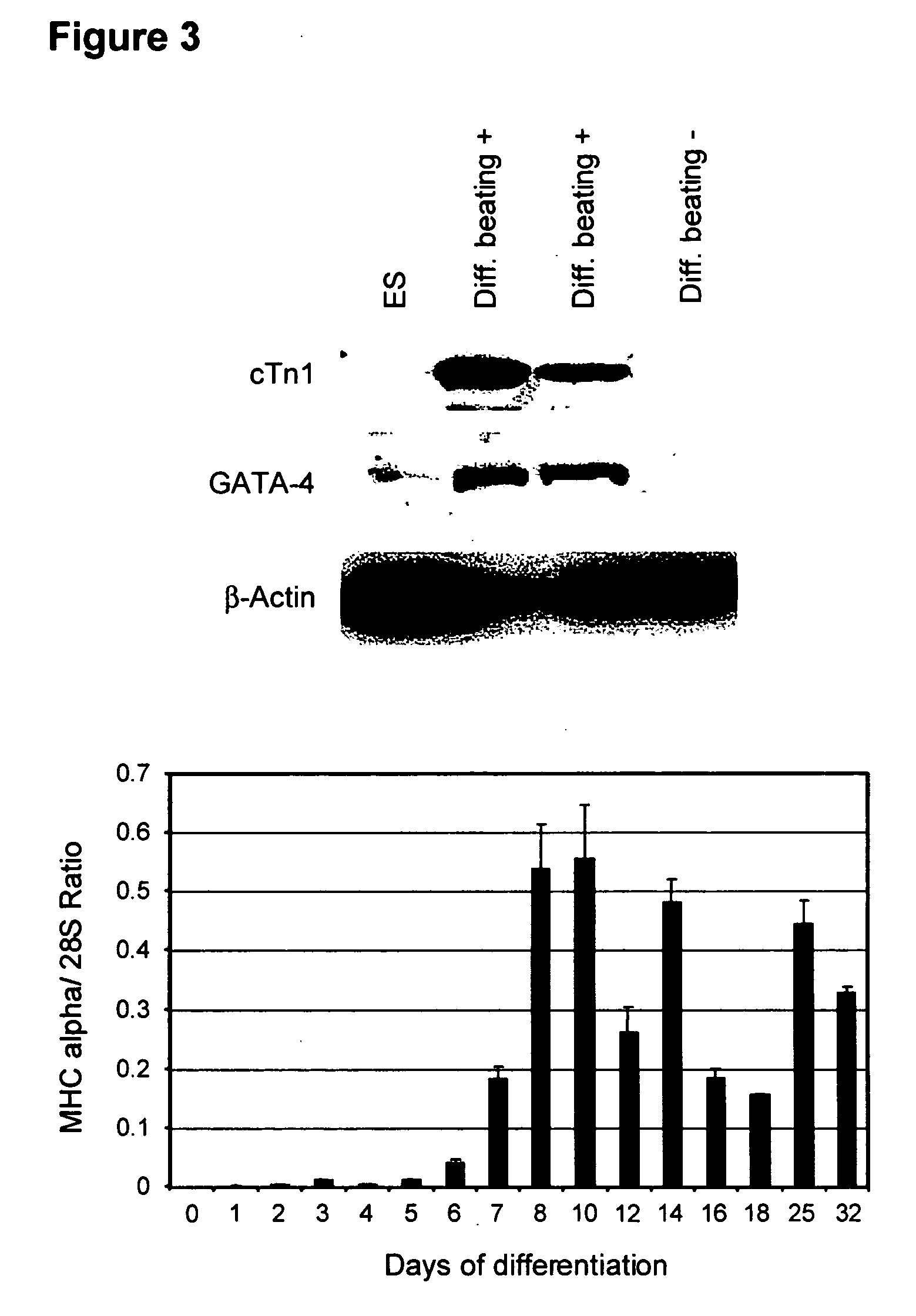Process for making transplantable cardiomyocytes from human embryonic stem cells
a technology of embryonic stem cells and transplantable cardiomyocytes, which is applied in the field of making transplantable cardiomyocytes from human embryonic stem cells, can solve the problems of no established cardiomyocyte cell lines that are approved, and achieve the effect of efficient production
- Summary
- Abstract
- Description
- Claims
- Application Information
AI Technical Summary
Benefits of technology
Problems solved by technology
Method used
Image
Examples
example 2 and example 5
show that differentiation of pPS into cardiomyocyte lineage cells occurs efficiently in the presence of fetal bovine serum. In certain circumstances, the use of serum or a serum substitute or replacement at an appropriate concentration in the medium (usually 5 to 40%, typically 20%) is sufficient to promote the differentiation process, with the use of other added cardiotrophic factors being optional. Candidate serum substitutes include those described in Desai et al., Hum. Reprod. 12:328, 1997; Gardner, Hum. Reprod. 13 Suppl. 4:218, 1998; and US 20020076747 A1. It has also been discovered that inhibition of Wnt pathways by overexpression of the inhibitor Dkk-1 blocks cardiac differentiation. Cardiomyocytes appear in EB cultures under serum-free conditions if a Bone Morphogenic Protein (BMP) is added to the medium. Accordingly, medium containing nutrients and a BMP can substitute for serum, or can complement its effect in promoting cardiomyocyte generation and maturation.
pPS-derived...
examples 10 and 11
illustrate the process. Mixed populations of cells containing cardiomyoctyes were put in fresh medium, and the clusters were harvested by settling in a 15 or 50 mL conical tube. They were refed in serum-containing medium, and taken through cycles of cluster separation, feeding, and reculturing every 2 or 3 days. After about 8 days, there was considerably increased expression of cardiomycotye markers cTnI and MHC at the mRNA level (FIG. 12), and a high proportion of spontaneously contracting clusters (FIGS. 13 and 14).
The cardiac body™ technique can be used to expand and / or enrich the cardiomyocytes in the cell population at any time in the differentiation process. As exemplified below, the technique is particulary effective employed after a previous enrichment step by density separation. Implementation of the technique has benefits that were not anticipated before the making of this invention. In particular, the expression of myosin heavy chain detected by real-time PCR increases 1...
example 1
Feeder-Free Propagation of Embryonic Stem Cells
Established lines of undifferentiated human embryonic stem (hES) cells were maintained in a culture environment essentially free of feeder cells.
Feeder-free cultures were maintained using conditioned medium prepared using primary mouse embryonic fibroblasts isolated according to standard procedures (WO 01 / 51616). Fibroblasts were harvested from T150 flasks by washing once with Ca++ / Mg++ free PBS and incubating in 1.5-2 mL trypsin / EDTA (Gibco) for ˜5 min. After the fibroblasts detached from the flask, they were collected in mEF media (DMEM+10% FBS). The cells were irradiated at 4000 rad, counted and seeded at −55,000 cells cm2 in mEF medium (525,000 cells / well of a 6 well plate).
After at least 4 h, the medium were exchanged with SR containing ES medium (80% knockout DMEM (Gibco BRL, Rockville Md.), 20% knockout serum replacement (Gibco), 1% Non-essential amino acids (Gibco), 1 mM L-glutamine (Gibco), 0.1 mM β-mercaptoethanol (Sigma...
PUM
 Login to View More
Login to View More Abstract
Description
Claims
Application Information
 Login to View More
Login to View More - R&D
- Intellectual Property
- Life Sciences
- Materials
- Tech Scout
- Unparalleled Data Quality
- Higher Quality Content
- 60% Fewer Hallucinations
Browse by: Latest US Patents, China's latest patents, Technical Efficacy Thesaurus, Application Domain, Technology Topic, Popular Technical Reports.
© 2025 PatSnap. All rights reserved.Legal|Privacy policy|Modern Slavery Act Transparency Statement|Sitemap|About US| Contact US: help@patsnap.com



